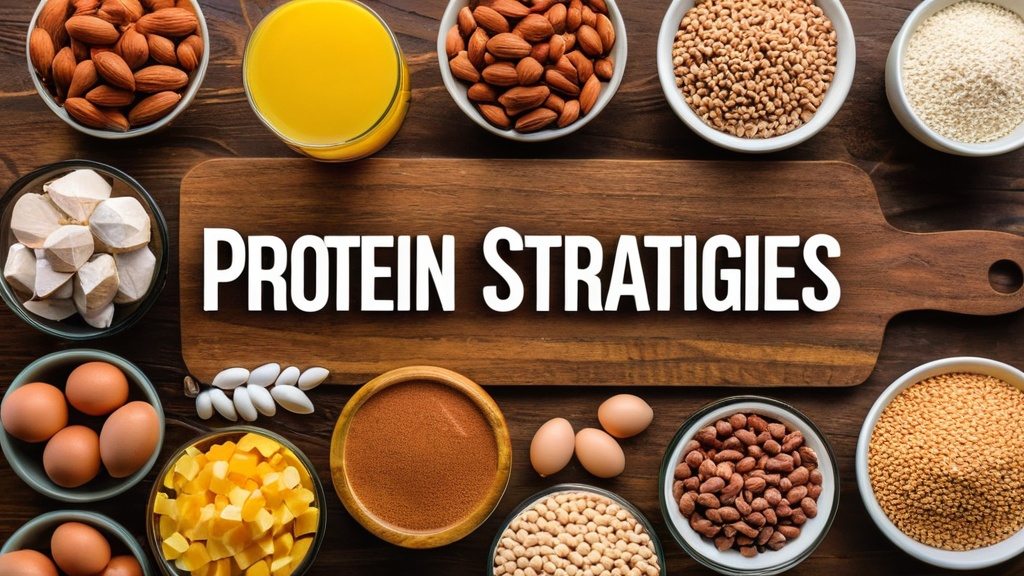Low-hormone phases occur during specific times in the menstrual cycle, particularly in the follicular phase. During this time, estrogen and progesterone levels drop significantly. Women may experience various physical and emotional changes due to these hormonal fluctuations.
Understanding these phases helps women manage their health better. Recognizing the signs of low-hormone phases can lead to improved dietary choices and lifestyle adjustments. This awareness empowers women to take control of their well-being.
Key Takeaways
- Low-hormone phases can affect metabolism, energy levels, and muscle recovery
- Protein is crucial for muscle repair and growth during low-hormone phases
- Consuming protein within 30 minutes of exercise can maximize muscle recovery
- Lean meats, dairy, eggs, and plant-based sources are ideal for protein intake during low-hormone phases
- Planning meals with a balance of protein, carbohydrates, and healthy fats is essential for optimal nutrition during low-hormone phases
Importance of Protein in Low-Hormone Phases
Protein plays a crucial role during low-hormone phases. It supports muscle maintenance and repair, which is vital when hormone levels dip. Adequate protein intake can also help stabilize blood sugar levels, reducing mood swings and fatigue.
Moreover, protein aids in the production of hormones and enzymes. This support becomes essential when the body experiences hormonal imbalances. Prioritizing protein can enhance overall health during these challenging times.
Protein Timing for Optimal Results

Timing your protein intake can maximize its benefits during low-hormone phases. Consuming protein-rich meals or snacks throughout the day helps maintain energy levels. Aim for a balanced distribution of protein across meals to support muscle synthesis.
Consider consuming protein shortly after workouts. This timing enhances recovery and muscle growth, especially when hormone levels are low. A strategic approach to protein timing can yield significant results.
Protein Sources for Low-Hormone Phases
Choosing the right protein sources is vital during low-hormone phases. Lean meats, fish, eggs, and dairy products provide high-quality protein. Plant-based options like legumes, nuts, and seeds also offer excellent alternatives.
Incorporating a variety of protein sources ensures a well-rounded nutrient profile. This diversity helps meet individual dietary preferences and restrictions. A balanced approach to protein sources supports overall health during low-hormone phases.
Meal Planning for Protein Intake
Effective meal planning can enhance protein intake during low-hormone phases. Start by incorporating protein into every meal and snack. This strategy ensures consistent energy levels and supports muscle maintenance.
Consider preparing meals in advance to simplify your routine. Batch cooking protein-rich foods can save time and reduce stress. A well-structured meal plan promotes healthy eating habits and supports hormonal balance.
Protein Supplements for Low-Hormone Phases

Protein supplements can be beneficial during low-hormone phases. They offer a convenient way to increase protein intake without much effort. Options like whey, casein, or plant-based protein powders can fit various dietary needs.
However, it’s essential to choose high-quality supplements. Look for products with minimal additives and fillers. Using protein supplements wisely can complement a balanced diet during low-hormone phases.
Balancing Protein with Other Nutrients
While protein is crucial, balancing it with other nutrients is equally important. Carbohydrates provide energy, while healthy fats support hormone production. A well-rounded diet ensures optimal health during low-hormone phases.
Incorporate fruits, vegetables, and whole grains into your meals. These foods offer essential vitamins and minerals that support overall well-being. Strive for a balanced plate to maximize health benefits.
Protein and Exercise in Low-Hormone Phases
Exercise plays a significant role in managing low-hormone phases. Combining regular physical activity with adequate protein intake enhances muscle recovery and growth. Engaging in strength training can be particularly beneficial during these times.
Listen to your body and adjust your workout intensity as needed. Hormonal fluctuations may affect energy levels and motivation. Tailoring your exercise routine can help maintain consistency and support overall health.
Protein and Hormonal Imbalances
Hormonal imbalances can significantly impact overall health and well-being. Protein intake plays a role in regulating hormones and supporting metabolic functions. Ensuring adequate protein consumption can help mitigate some effects of hormonal fluctuations.
Consider consulting a healthcare professional if you suspect hormonal imbalances. They can provide personalized guidance on nutrition and lifestyle changes. Addressing these issues holistically promotes better health outcomes.
Protein and Metabolism in Low-Hormone Phases
Metabolism often slows down during low-hormone phases due to hormonal changes. Adequate protein intake can help counteract this effect by promoting muscle mass retention. Muscle tissue burns more calories at rest, supporting a healthier metabolism.
Incorporating high-protein foods into your diet can boost metabolic rates. This approach helps maintain energy levels and supports weight management goals. Focus on protein-rich meals to enhance metabolic function during low-hormone phases.
Optimizing Protein Strategies for Low-Hormone Phases
Optimizing protein strategies during low-hormone phases is essential for overall health. Prioritize high-quality protein sources and consider timing your intake effectively. Meal planning and incorporating supplements can further enhance your approach.
Balancing protein with other nutrients ensures a well-rounded diet. Stay active and listen to your body’s needs during these phases. By focusing on these strategies, you can navigate low-hormone phases with greater ease and confidence.
FAQs
What are low-hormone phases?
Low-hormone phases refer to periods in a woman’s menstrual cycle when estrogen and progesterone levels are at their lowest, typically occurring during the menstrual and follicular phases.
Why is protein important during low-hormone phases?
Protein is important during low-hormone phases as it helps support muscle recovery and growth, aids in hormone regulation, and can help manage appetite and cravings.
What are some protein strategies for low-hormone phases?
Some protein strategies for low-hormone phases include consuming high-quality protein sources such as lean meats, fish, eggs, dairy, and plant-based proteins, spreading protein intake evenly throughout the day, and incorporating protein into each meal and snack.
How much protein should be consumed during low-hormone phases?
The amount of protein needed during low-hormone phases can vary depending on individual factors such as age, weight, and activity level. However, a general recommendation is to aim for 20-30 grams of protein per meal and 10-15 grams per snack.
Are there any specific types of protein that are beneficial during low-hormone phases?
During low-hormone phases, it can be beneficial to include protein sources that also contain essential amino acids, such as whey protein, as well as sources high in iron and B vitamins, such as lean meats and fish, to support overall health and energy levels.



